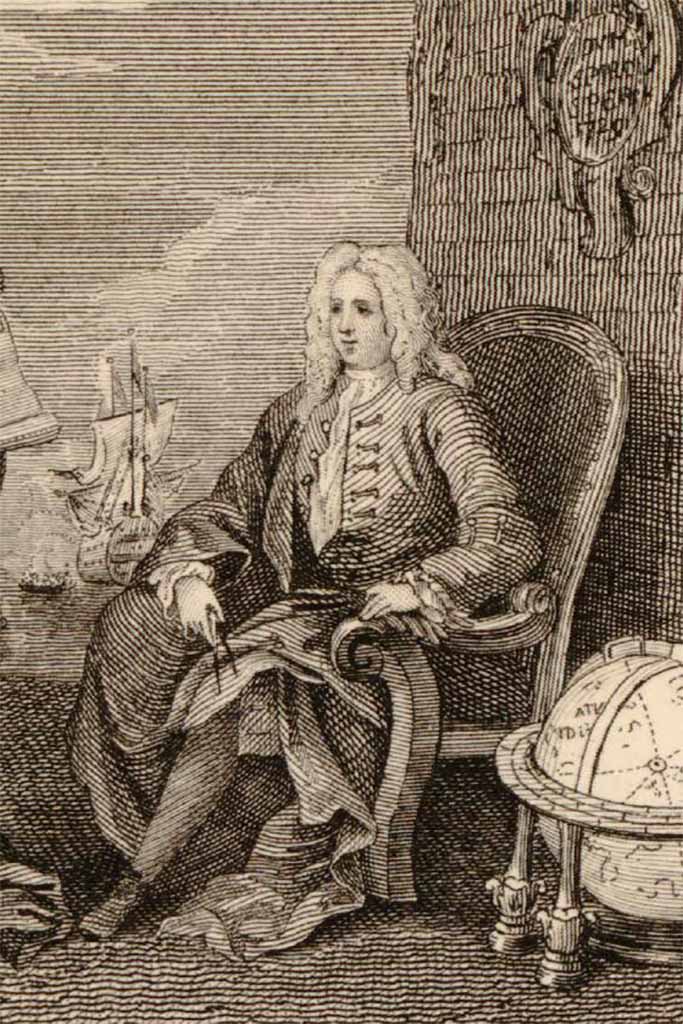Adventurer: Woodes Rogers
Table of Contents
Share This
British privateer

Woodes Rogers (detail) by Ireland’s Graphic Illustrations of Hogarth. Courtesy of the British Museum.
Just after three frigates under his command had captured the Spanish galleon Nuestra Senora de Encarnacion (which he renamed Bachelor), British privateer Woodes Rogers arrived at Guam on 11 March 1710, asking that Governor Juan Antonio Pimentel enable him to replenish his ships – otherwise he would bombard the island.
On 4 January, Rogers had also attempted to take the galleon Nuestra Señora de Begoña, resulting in eight deaths and 28 men wounded in the battle that followed. Rogers was lying in wait in Guam for the Begoña, which failed to show.
Rogers sent a letter ahead from his ship to Governor Pimentel, saying that he wished to purchase all the provisions which could be spared (to be paid for very likely with pieces of eight that were part of the booty), and that, furthermore, if the Spanish refused to deal with him, he would blast their villages with his ships’ guns. Governor Pimentel, who had only 130 troops as compared to Rogers’ 300 men, agreed on the condition that they put ashore the prisoners they had taken from the galleon.
Governor Pimentel directly made a present to Captain Rogers of four bullocks, limes, oranges, and coconuts. In return Rogers invited Governor Pimentel and four of his officers aboard his ship for dining and entertainment. Later, Rogers and his officers also visited the governor’s palace in Hagåtña and were given a feast of more than 60 dishes of various delicacies. Along with needed food supplies, Governor Pimentel added “2 Negro Boys dress’d in Liveries, 20 Yards of Scarlet Cloth-Serge, and 2 Pieces of Cambrick” before Rogers departed the island. For his mandated hospitality, Governor Pimentel was to spend several years imprisoned in Manila.
Rogers and his men were also very impressed with the speed and workmanship of the CHamoru flying proas which they saw all around them in the Guam and Rota waters. Captain Rogers observed:
By what I saw, I believe they may run 20 miles an hour, for they passed our ships like a bird flying.
When Rogers left Guam on 22 March 1710, he took one of the flying proas back to London with him as a souvenir.
For further reading
Carano, Paul, and Pedro C. Sanchez. A Complete History of Guam. Rutland: Charles E. Tuttle, Co., 1964.
Hezel, Fran X., SJ. From Conquest to Colonization: Spain in the Marianas 1690-1740. 2nd ed. Saipan: Commonwealth of the Northern Mariana Islands Division of Historic Preservation, 2000.
Rogers, Robert F. Destiny’s Landfall: A History of Guam. Honolulu: University of Hawai’i Press, 1995.
